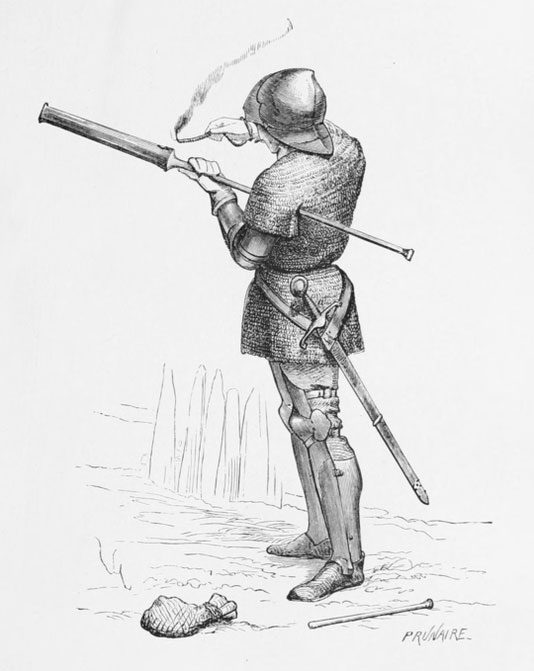Firearms have existed for over 1,000 years, influencing warfare and society in ways that perhaps no other invention can compare.
Once regarded solely as weapons for military forces around the world, firearms are now viewed as personal property in many countries. The story of this weapon traces back to China around 850 AD, when alchemists accidentally created gunpowder in their quest to develop the “elixir of life.” The powder produced was known as huo yao, a mixture of charcoal, saltpeter, and sulfur.
The Chinese quickly realized that the powder they discovered could be utilized in warfare. By the Song Dynasty, they utilized gunpowder to defend against the Mongol invaders.

Scientists believe that the Chinese fire lance is the first firearm.
The Chinese attacked the Mongol forces using the fire lance, also known as “flying fire.” Initially, this weapon consisted of a tube (often made of bamboo) filled with gunpowder and a slow-burning fuse attached to a spear. When ignited, the gunpowder would explode, releasing a jet of flame in a specific direction.
Over the centuries, various gunpowder weapons were developed and refined by the Chinese in their battles against the Mongols, including cannons and grenades.
Gunpowder made its way to Europe in the 13th century, possibly through trade routes along the Silk Road. European countries refined gunpowder in the following centuries, eventually discovering the optimal mixture: 75% saltpeter, 15% charcoal, and 10% sulfur.
By 1350, crude gunpowder cannons became popular in the armies of England and France. The two nations utilized these inventions in the Hundred Years’ War against one another.
In the subsequent centuries, new and improved cannons were designed, many of which were smaller and more portable. Eventually, hand cannons were developed in the early 15th century, marking the invention of the first personal firearm. The Ottoman army used this type of cannon and other artillery during the siege of Constantinople in 1453. These new and more powerful weapons significantly diminished the effectiveness of traditional European fortifications.

The hand cannon is considered the first personal firearm.
Historians often regard the Chinese fire lance as the first firearm of humankind. However, before the 15th century, firearms were still quite difficult to fire, requiring both hands to hold and a fuse to ignite.
The invention of the matchlock helped alleviate some of the limitations of firearms. Its advantages included a trigger mechanism, stock, and grip, allowing users to shoulder their weapon, aim, and fire simultaneously. However, this innovation and the advent of matchlock guns were merely preliminary steps, as they remained relatively bulky and could only fire once every two minutes.
Over time, firearms gradually improved, becoming more compact and easier to use. They began to replace older weapons due to their significant time efficiency. It took a lifetime of training to become a skilled swordsman or archer, but only a few weeks or months of training could transform an ordinary person into a proficient marksman.


















































